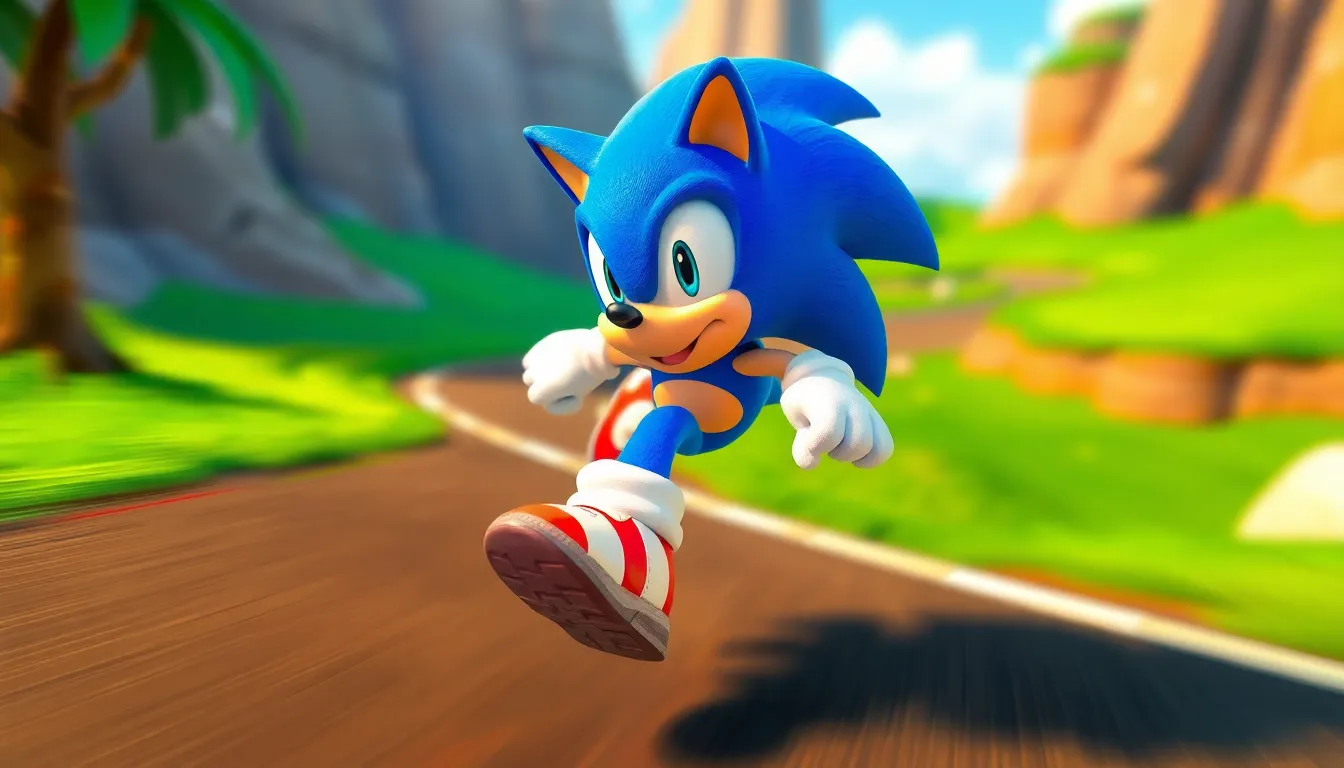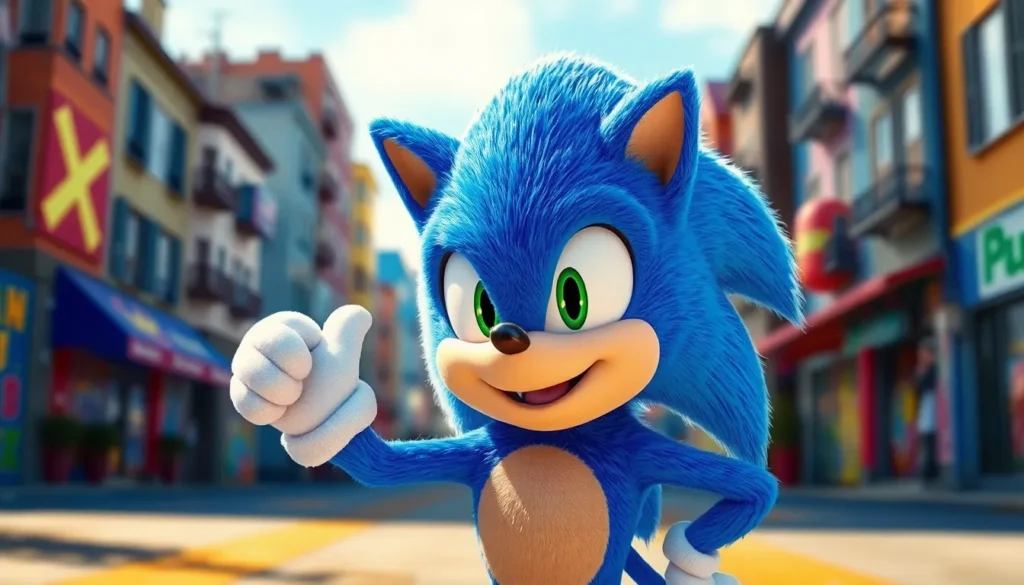Table of Contents
ToggleThe Sonic the Hedgehog movie has taken fans on a thrilling ride, transforming the beloved video game character into a cinematic icon. Initially met with skepticism, the film faced backlash over its first design, prompting a major redesign that ultimately led to widespread acclaim. This shift not only salvaged the project but also reignited excitement among long-time fans and newcomers alike.
As the film raced into theaters, it became clear that the changes made were more than just cosmetic. The story, character development, and humor resonated with audiences, proving that sometimes a second chance can lead to spectacular results. Exploring the evolution of Sonic from concept to screen reveals how a franchise can adapt and thrive in a competitive entertainment landscape.
Sonic Movie Before and After: An Overview
The Sonic the Hedgehog movie transformed significantly from its initial criticism to a widely appreciated release. Before its launch, the film faced backlash primarily due to Sonic’s character design, which many fans deemed unappealing. The outcry prompted the production team to implement changes that better aligned Sonic’s appearance with fan expectations.
After the redesign, Sonic’s look received acclaim for its resemblance to the classic video game character. The film’s narrative also evolved, highlighting themes of friendship and heroism that resonated with audiences. Engaging character interactions and humor played crucial roles in enhancing the film’s appeal.
The combination of visual improvements and a solid storyline contributed to the movie’s success at the box office, marking a significant comeback for the franchise. This evolution illustrates how feedback can drive positive changes in film production, ultimately leading to a product that meets audience expectations and achieves commercial viability.
The Evolution of Sonic in Cinema

Sonic the Hedgehog’s journey in cinema reflects significant changes that resonate with fans and audiences alike. The character’s evolution highlights the power of feedback and adaptation in film.
The Original Sonic the Hedgehog Animation
The original Sonic the Hedgehog animation debuted in 1993 with the series “Adventures of Sonic the Hedgehog” and “Sonic the Hedgehog” (often referred to as “SatAM”). These series established Sonic’s personality as confident and rebellious, appealing to a youthful audience. The animation featured fast-paced storytelling and engaging plots, leading to multiple iterations and continued popularity through the 1990s. Notably, the character’s design and voice work became iconic, influencing future manifestations of Sonic across various media.
Live-Action Adaptation Challenges
The live-action adaptation faced notable challenges prior to its 2020 release. Initial character design sparked a public outcry, as many felt the portrayal deviated too far from the game’s essence. Adapting Sonic’s vibrant animated look into a realistic style presented hurdles. After widespread criticism, the production team redesigned Sonic, resulting in a character that ultimately aligned more closely with the franchise’s identity. This redesign process underscored the importance of audience engagement and demonstrated the industry’s ability to respond to fan feedback effectively.
Key Changes in the Sonic Movie
Sonic the Hedgehog underwent significant modifications during its production, addressing both character design and narrative elements. These changes enhanced audience reception and ensured the film aligned more closely with fan expectations.
Character Design and Visual Effects
Character design faced intense scrutiny prior to release. Initial depictions of Sonic included unnaturally human-like features, which many fans criticized. The film’s creators responded swiftly, launching a redesign that emphasized Sonic’s iconic blue hue, larger eyes, and quilled back. This transformation resulted in a character that more closely mirrored his video game origins. Visual effects also experienced upgrades, showcasing smoother animations and dynamic action sequences, enhancing the overall viewing experience. The improved design and effects led to greater audience connection and enthusiasm.
Plot and Narrative Adjustments
The storyline experienced revisions aimed at strengthening engagement. Early drafts presented a typical hero-villain dynamic, which felt formulaic. Subsequent changes introduced depth to character motivations and relationships, particularly between Sonic and his human ally, Tom. Themes of friendship and teamwork emerged prominently, resonating with viewers. Additionally, comedic elements were integrated more seamlessly, appealing to both children and adults. These narrative enhancements elevated the film from a standard adaptation to a nuanced exploration of Sonic’s character and journey, contributing to its commercial success.
Audience Reception: Then and Now
The Sonic the Hedgehog movie experienced drastic shifts in audience reception from its initial release to its current status, marked by both box office performance and critical reviews.
Box Office Performance
The Sonic movie achieved impressive box office results. The film grossed over $319 million worldwide against a budget of $85 million, marking it as the highest-grossing video game adaptation of all time. Opening weekend revenues reached $58 million, significantly surpassing projections. Following its release, the movie maintained strong performance, partly due to positive word-of-mouth stemming from the redesign and enhanced story elements. The film’s commercial success demonstrated a shift in audience sentiment, with many revisiting the theater multiple times or encouraging friends to watch.
Critical Reviews
Critical reception shifted dramatically post-redesign. Initially, critics expressed concerns regarding Sonic’s character design and the film’s narrative. However, following the redesign and the movie’s release, reviews became notably more favorable. The film received an average score of 63% on Rotten Tomatoes from critics, while audience scores soared to 93%. Reviewers praised the film for its humor, character development, and adherence to the original game’s spirit. Sonic’s energetic and relatable persona contributed to a more engaging cinematic experience, aligning with both fan expectations and critical insights. The positive reviews emphasized the film’s ability to resonate with long-time fans while attracting new viewers.
The Sonic the Hedgehog movie’s transformation is a testament to the power of listening to fans. By addressing initial criticisms and making thoughtful changes, the film evolved into a beloved adaptation that resonates with audiences of all ages. Its impressive box office success and positive reviews reflect a well-executed balance between honoring the source material and providing fresh storytelling.
This journey not only revitalized Sonic’s image but also set a precedent for future adaptations. The film’s ability to adapt based on feedback showcases the importance of collaboration between creators and fans in the entertainment industry. Ultimately, Sonic’s cinematic evolution serves as an inspiring example of how challenges can lead to remarkable outcomes.







